Mossadegh, Islam and Ayatollahs
—
The story behind the fall of democracy and rise of fundamentalism in Iran
by Ebrahim Norouzi
First published: november 24, 2009 The Mossadegh Project
“I am an Iranian and a Muslim and as long as I live I will fight against any threat to the Iranian nationality and Islam.” – Mossadegh in the Majles, 1945
“He (Mossadegh) was also not a Muslim…and I said…he will be slapped and it did not take long that he was slapped (in the 1953 coup) and if he had lasted he would have slapped Islam”. – Khomeini in a 1980 speech
Throughout his political life, Dr. Mohammad Mossadegh did his best to maintain a cordial relationship with the religious community in Iran. Though firmly secular, Mossadegh was keenly aware that in the composition of Iranian society, Islam and the Shi’ite faith had deep roots. He had witnessed its broad influence for himself, from clerical participation in the Constitutional revolution in the first decade of the 20th century, to their enduring following among Iran’s conservatives, particularly in the low and middle class. For his efforts to bring independence and freedom to the country, Mossadegh received the support of many Ayatollahs and high ranking clerics. Several Ayatollahs went as far as declaring fatwas (religious proclamations) in support of his agenda; and many—among them Taliqani, Zanjani, Milani…even stood by him till the end.
In 1925, when Mossadegh was first elected to the Majles [lower house Parliament], he joined the constitutionalist cleric and Majles deputy, Hassan Modarres, in opposition to the establishment of the Pahlavi dynasty and the authoritarian rule of its founder, Reza Shah. Later, he received valuable cooperation from the influential political activist Ayatollah Kashani, particularly on the issues of oil nationalization and the effort to rid Iran of British control.
Kashani’s help came with expectations, however. Kashani felt that he had earned the right to be involved in the important affairs of the government, such as the selection of cabinet members, and for his sons to receive preferential treatment in their bid for election to the Majles. As leader of the national Democratic front, Mossadegh opposed interference by Kashani or any other unelected and unaccountable individuals in governmental affairs, and considered Kashani’s demands to be illegal, unethical and undemocratic.
Kashani’s rivalry with Mossadegh came to a head in December 1952, when he strongly opposed Mossadegh’s request for extra power from Majles. As the speaker of the Majles, Kashani was humiliated when they approved Mossadegh’s request against his wishes. By this time, Kashani’s long anti-imperialist stance had completely mutated into a personal battle for position of supremacy and national stature, leading ultimately to his cooperation with the Shah and the British-American plot to overthrow Mossadegh.
After the split, Kashani joined the pro-monarch Ayatollah Behbehani and diligently worked to unseat Mossadegh. He and his supporters, under the pretense of religion and in part to throw a monkey wrench into governmental operations, spearheaded the passage of an alcoholic prohibition resolution through the Majles. The loss of tax revenue from the domestic sale of alcoholic beverages created more difficulty for the government at a time of severe financial difficulty due to the British blocking the sale of Iranian oil on the international market. In addition to Kashani, two secular deputies, Baghai and Makki, previously staunch and effective supporters of Mossadegh, abandoned him over policy differences and personal ambition. The defection of Kashani, Baghai and Makki was a serious blow to Mossadegh’s national agenda and the position of his government.
In late January 1953, a meeting between Mossadegh and Kashani arranged by intermediaries failed to reach the intended result of rapprochement between the two. Ayatollah Boroujerdi, the sole Marjae Taghlid (source of emulation) but to date non-political cleric, also began to oppose Mossadegh for reasons such as the government’s proposal to reform election law by giving voting rights to women.
This coalition of oppositional clerics saw their livelihood more threatened within a progressive democratic regime than a monarchial system–even with the foreign presence in the country. To justify their acrimonious actions, they claimed that Mossadegh’s government was anti-Islamic, threatened the legitimacy of the monarchy, and risked the Tudeh (communist) party takeover of the country. The distribution of CIA-provided “Behbehani dollars” among mullahs and knife wielding mobs, in addition to Kashani’s ability to summon in a short time a large contingent of his supporters to the streets, helped to turn the tide against Mossadegh and his government.
Another religious element that Mossadegh had to contend with was the radical fundamentalist group Feday’ian-e Islam (Self-Sacrificers of Islam). Led by Navvab Safavi, a young and charismatic seminary student, this militant and cult-like organization had a history of using terror in order to pave the way for the establishment of an Islamic government in Iran. They had already assassinated several intellectual and political personalities whom they had found to be an anathema to their brand of Islam. They demanded that Mossadegh’s government apply Sharia Islamic law, starting with the imposition of a women’s dress code (hijab), firing of all women working in the government, banning the production, sale and consumption of alcohol, and making public prayer mandatory for all government employees. Mossadegh, who was strongly against the establishment of a religious state, refused to heed any of their demands. Feday’ians then threatened him with assassination, which became a factor in Mossadegh’s decision to use his home as the office of the prime minister.
Unable to make good on their threat against Mossadegh, Feday’ian-e Islam attempted to assassinate his loyal and courageous assistant (and later his foreign minister), Dr. Hossein Fatemi, in February 1952. Fatemi was severely wounded and never fully recovered in his lifetime. For a time, Feday’ians even opposed Ayatollah Kashani for his initial support of Mossadegh and his belief that the time for founding an Islamic government had not yet come. Years later during the 1979 Iranian revolution, Faday’ian members assisted Khomeini in founding the Islamic regime and many served in the government. The Feday’ian member who had attempted to kill Dr. Fatemi served as a deputy in the first Majles following the revolution.
The truth about Mossadegh is that during his long career, he made it clear on numerous occasions that he had great respect for the religion of Islam and that he himself was a Muslim. However, he did not use religion for the sake of political gain, and he did not favor or oppose anyone on the basis of their faith. He believed making religion a political issue would not serve the interest of the country and its people, yet recognized its significance in society. Thus, Mossadegh aimed to create a peaceful coexistence between the religious order and his secular government.
The notion that Mossadegh was a threat to Islam was a baseless smear and nothing more, and there are many examples to support this.
While studying law in Switzerland, Mossadegh chose his doctorate thesis on the subject of “Wills and Testaments In Islamic Law”. To confirm the accuracy of his writing, he traveled back to Iran from Europe to consult religious experts on the matter, writing it first in Persian before its translation to French in 1914.
In 1925, Mossadegh said in the 5th Majles:
“Last year in front of the respectable deputies I swore to the glorious words (Koran) that I will not betray my country and the people. At that moment, I swore I was a Muslim and I remain a Muslim, and I’m now requesting the deputies to rise in respect to this Koran (at this time he pulled out a Koran from his breast pocket and all the deputies rose in their place and called to witness in front of all the deputies by reciting the Arabic phrase that is required for the acceptance or reaffirmation of the Muslim faith)…… If I witness anything against the interest of the country I am obligated to speak up in order to defend the country, protect the nation and for the permanence of Islam….”
In 1945, he famously proclaimed in Parliament that, “I am an Iranian and a Muslim and as long as I live I will fight against any threat to the Iranian nationality and Islam.”
Mossadegh’s mother and wife, whom he considered “the two most influential persons in my life” were both pious, faithful Muslims. In his own handwritten will, he allocated a sum of money to be spent towards “prayer, fasting and pilgrimage” and to be buried according to the Islamic faith.
Nevertheless, the antagonistic Islamic factions continued to resort to slander and lies about him, accusing him of harboring enmity towards Islam and lack of religious faith. The cooperation of the hostile Islamic factions with the royal court and the Shah’s supporters as well as the British and American conspirators ultimately proved to be a lethal force for Mossadegh’s government. It ended with the CIA coup on August 19, 1953 that placed the final arrow in the heart of Iran’s young democracy.
One day after the August 1953 coup, Feday’ian-e Islam’s newsletter had this to say:
“Yesterday Tehran shook under the feet of Army personnel and anti-foreign Muslims. Mossadegh, the bloodthirsty old ghoul, resigned under the devastating blows of the Muslims….All the government centers were seized by the Muslims and the army of Islam”.
Several days later, an Egyptian reporter asked Ayatollah Kashani about the kind of punishment Mossadegh would face. Kashani replied: “According to the honorable law of Islam, the penalty for the one who betrays the Jihad while in the position as commander of the country is death”.
Epilogue: The Islamic Revolution
A quarter century after the CIA coup, the popular 1979 Iranian revolution brought about the demise of the Pahlavi dynasty which some of its forebearers had conspired with in 1953. The revolution had the broadest support among people of all walks of society, both secular and religious.
On March 6, 1979, hundreds of thousands of people gathered at Mossadegh’s grave site in Ahmadabad, 65 miles outside of Tehran. Many had traveled on foot through the desert on the occasion of the 12th anniversary of Mossadegh’s death (14 Esfand 1357) to honor and pay respect to this symbol of freedom and independence.
Ayatollah Taliqani, a Mossadegh loyalist, spoke in this gathering and praised Mossadegh, likening him to Moses. This show of respect for Mossadegh and his ideals of democracy and human rights alarmed Ayatollah Khomeini, whose agenda was the establishment of an Islamic state, and not a representative democracy. The post-Shah mushrooming of a free press prompted Khomeini to fight back against what he considered “the false and perverted news that causes disunity among all classes”. Democratic forces reacted by announcing that the upcoming birthday of Mossadegh on May 19, 1979 (29 Ordibehesht 1358) would be named “The Day of Free Speech and Free Press”, and a large demonstration was held on that day. Five days later, Khomeini commanded in a speech that “demonstrating for any body’s bones (meaning Mossadegh) and opposing Islam are not to be tolerated”.
Later, Khomeini spoke more venomously: “He (Mossadegh) was also not a Muslim…and I said…he will be slapped and it did not take long that he was slapped [in the 1953 coup] and if he had lasted he would have slapped Islam”.
For Khomenei, “Anybody not in the path of Islam is our enemy”.
Ultimately, Khomeini and the religious fundamentalists succeeded in purging the secular and democratic forces from the body of the revolutionary leadership and establishing their version of an Islamic regime. The thirty year experiment with this regime has failed to bring freedom, prosperity and security to the country and has done incalcuable damage to the image of Iranians, Muslims and people of Middle Eastern origin around the world. The majority of Iranian people still hope for a time in their country that Mossadegh envisioned in a speech in the 14th Majles:
“We must reach such a degree of true independence that what should motivate us is the interest of Iran and protection of its national character and nothing else…..”
Mazzeltov,
Crethi Plethi



 RSS
RSS


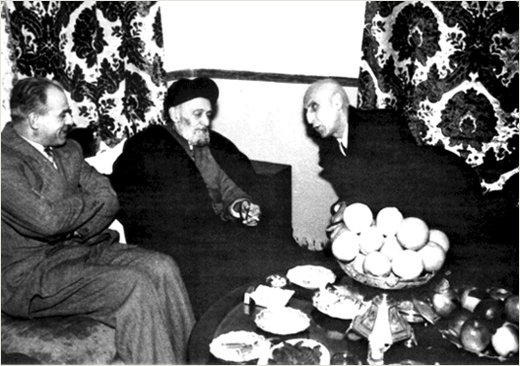
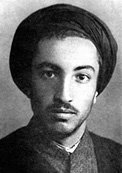
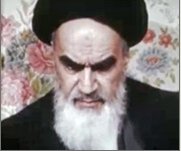
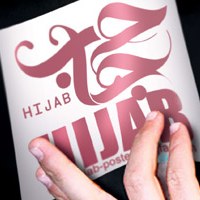
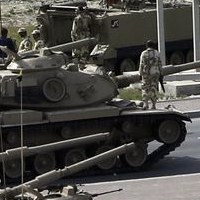


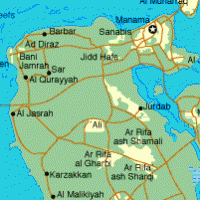





Iran And The Rise Of Fundamentalism In Iran – By Crethi Plethi http://tinyurl.com/yfqhxqd
RT @CrethiPlethi
#Iran and the rise of radical #Islam http://bit.ly/4D7hv3
Iran And The Rise Of Fundamentalism In Iran – By Crethi Plethi http://tinyurl.com/yfqhxqd
RT @AL_TAQIYYA: RT @CrethiPlethi
#Iran and the rise of radical #Islam http://bit.ly/4D7hv3
#Iran and the fall of democracy #Islam http://bit.ly/4D7hv3
RT @CrethiPlethi: #Iran and the fall of democracy #Islam http://bit.ly/4D7hv3